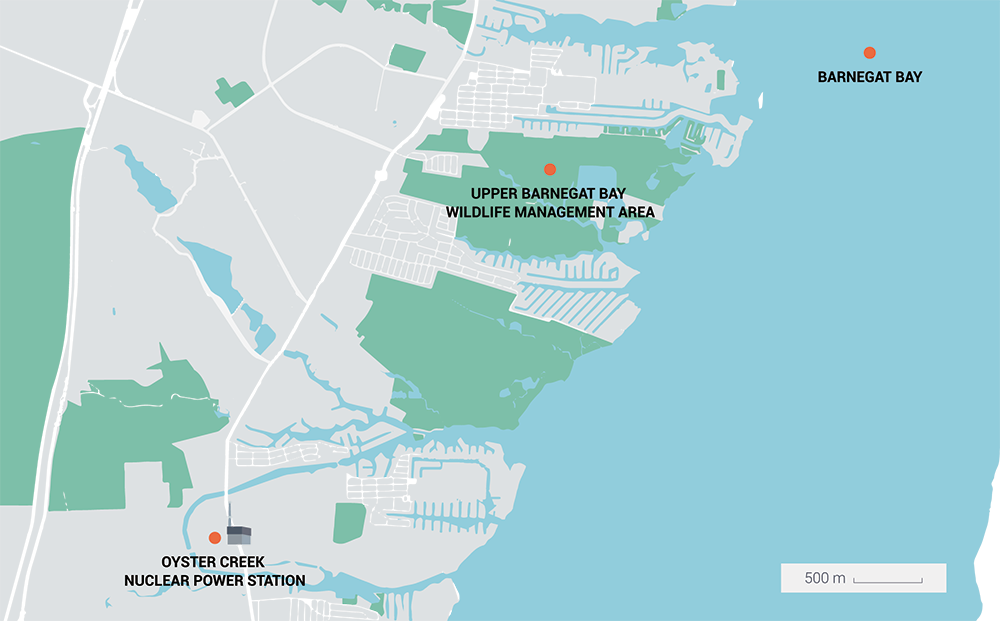The Oyster Creek nuclear power station started commercial operation in 1969, with a 40-year license to operate until 2009. Exelon acquired Oyster Creek in 2003, as part of its acquisition of AmerGen, which in turn had acquired the plant in 1999 for US$10 million. In 2009, the plant was granted a 20-year license extension (to 2029).
However, in 2010, Exelon decided to retire the plant early after revisions to New Jersey's water-use rules would have required it to build cooling towers at an estimated cost of US$800 million.
This change in the water-related regulatory position and the resulting extra capital cost burden were Oyster Creek’s ‘stranding event’, removing 10 years of extended-life optimal return.
Oyster Creek is situated on Barnegat Bay, an estuary covering 42 miles of New Jersey shoreline and home to rich marine biodiversity in several public wildlife refuges.

The power station operated a boiling water reactor, which meant a vast amount of cooling water was required from Barnegat Bay; each day 1.4 billion gallons were drawn, used as coolant, and discharged back into the bay at substantially warmer temperatures, thus causing thermal pollution in the receiving waters. This process was linked to ecological harm such as fish and turtles being pinned against grates at the plant’s water intake pipes, and fish and crab eggs killed as they traveled through the super-heated discharge water.
In addition to regulation, community opposition to the water risks posed by the plant played a role in its stranding. Environmental groups had been engaged throughout the re-licensing process, and although the license was ultimately granted, their pressure contributed to the proposed requirement of building cooling towers, and the shutdown of the plant in the face of Exelon’s refusal to do so.
